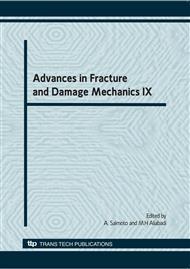p.805
p.809
p.813
p.817
p.821
p.825
p.829
p.833
p.837
Experimental Investigation on the Residual Stresses Induced by a Plastic Forming Process
Abstract:
The extrusion of a space frame must be followed by forming operations of some kind to obtain the desired shape/curvature, for example a stretch bending process. Therefore, one has to face with problems as production tolerances and cross-sectional distortions of the curved product. In house experience combined with trial–and–error procedures have been traditionally used to cope with the said problems. Aircraft frames show significant residual stresses as a consequence of plastic forming processes. A great number of variables, such as initial frame length and/or final additional stretch, can influence the stress state of frames determining their life and efficiency under operating loading conditions. In the present paper, we refer about the experimental evaluations of the residual stress state of aircraft frames which have carried out taking into account different process parameters. The experimental results obtained and discussed show some interesting trends: they demonstrate that the residual stresses of the formed component can be controlled and reduced.
Info:
Periodical:
Pages:
821-824
Citation:
Online since:
November 2010
Authors:
Price:
Сopyright:
© 2011 Trans Tech Publications Ltd. All Rights Reserved
Share:
Citation:


